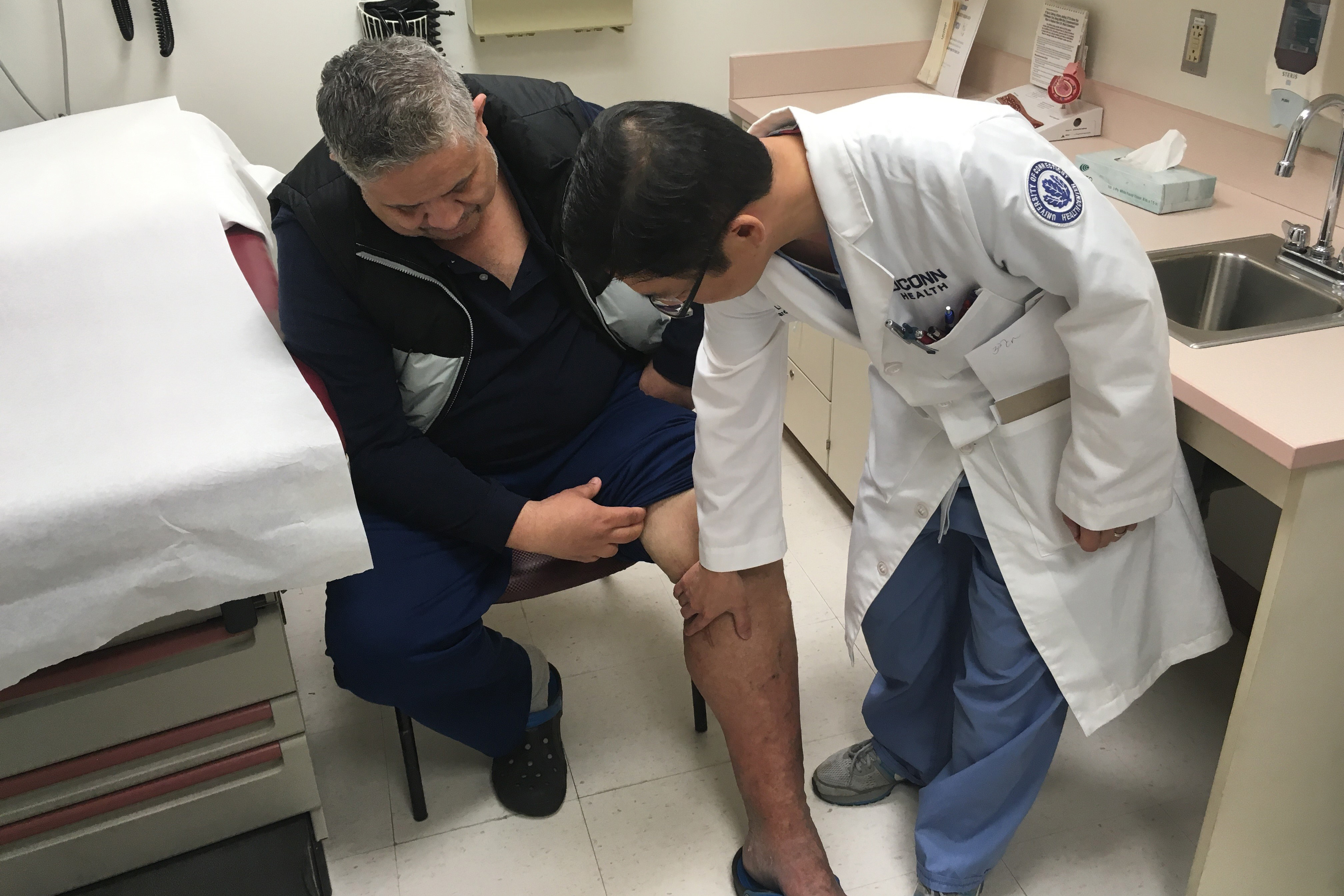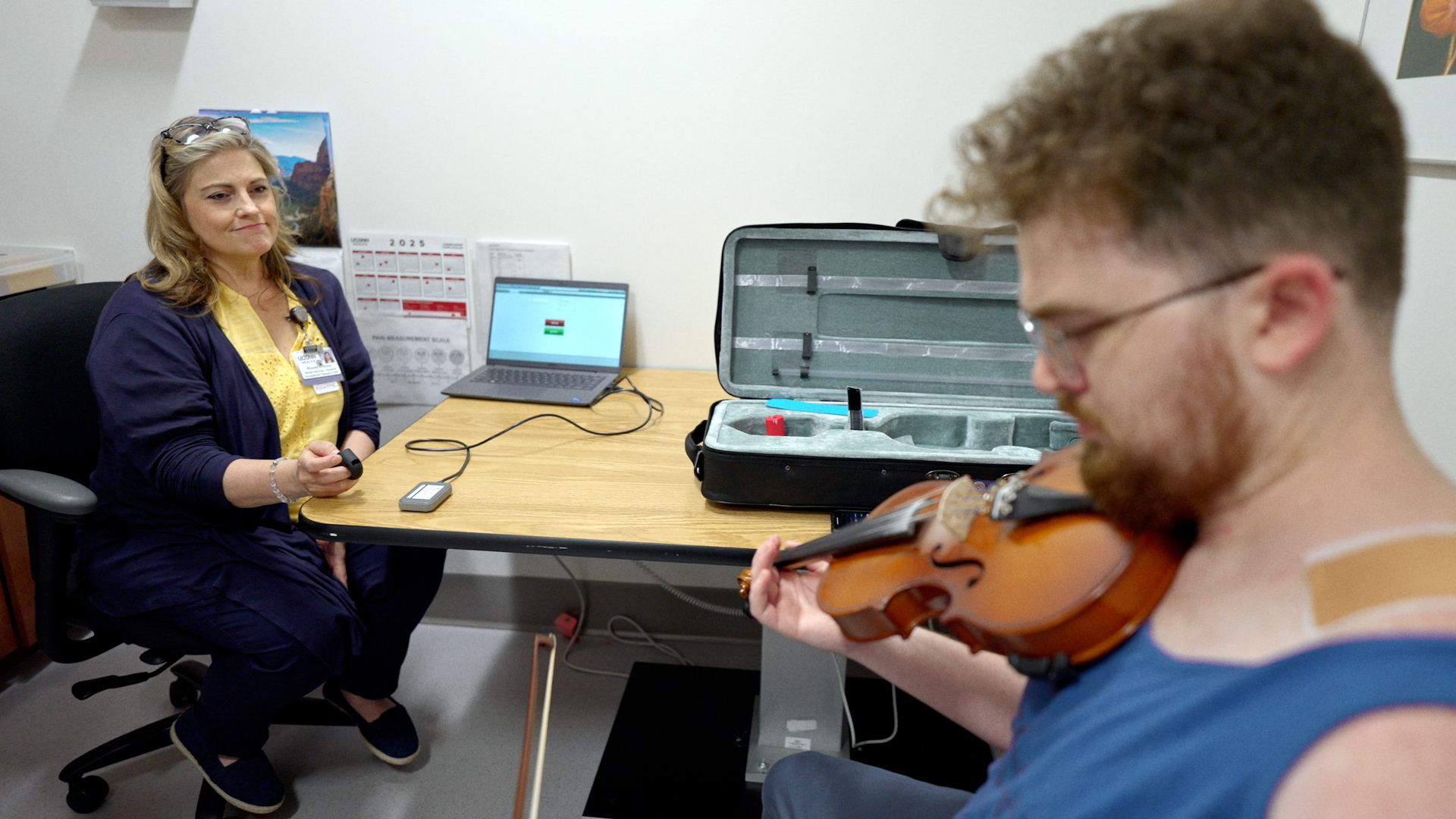Deep vein thrombosis is a dangerous blood clot that can form anywhere inside the body’s veins, but most often occurs in the legs.
The condition can strike those with either a family history of deep vein thrombosis, poor blood circulation, or with a genetic predisposition to developing blood clotting disorders. But it can also suddenly occur in healthy people if they become sedentary, perhaps following surgery, or after extended travel in an airplane or even a car, due to lack of movement.
If the blood clot travels from the leg it can be deadly, leading to a pulmonary embolism that blocks blood flow to part of the lung; and if it reaches the brain it can lead to a potentially debilitating stroke.

Newlywed Eliseo Bonilla, 50, of Willimantic knows all too well the severe pain and danger of a deep vein thrombosis.
“I have developed more than 20 DVTs in my life,” says Bonilla, who was 16 when he first experienced the symptoms of the condition: severe pain, extreme swelling – his leg doubled in size, and development of painful varicose veins in his left leg. “It would cause such severe pain to the point where I couldn’t even walk.”
Bonilla’s risk of leg blockages in his left leg are thought to stem from being born with a deformity that caused his left leg to be one inch shorter than his right and from the compression of a vein in his pelvis by the enlarged artery, or aneurysm, that he was born with. This rare abnormality, May-Thurner Syndrome, has also hindered venous blood from flowing back up to his heart.
In Puerto Rico, he was treated for his aneurysm, and also had bypass graft surgery for a blocked artery in his left thigh, but it became blocked again only a year later, causing him to live with daily pain from swelling and while walking, due to arterial and venous insufficiency in his left leg.
This winter, his condition became more severe: the arterial blood flow in his leg started to diminish significantly, and his leg swelling and varicose veins became so severe that his leg and foot were becoming purple and almost black in color.
His new groom and partner for many years, Lesme Valentin, turned to UConn to seek medical help for his husband.
Cardiologist Dr. Agnes Kim at UConn Health Storrs Center immediately referred Bonilla to Dr. JuYong Lee, an interventional cardiologist and director of vascular and endovascular medicine at UConn Health’s Pat and Jim Calhoun Cardiology Center in Farmington.
Using angiography and intravascular ultrasound, Lee was able to confirm that Mr. Bonilla had occlusion of his large vein in his pelvis caused by compression of his enlarged artery, and also found the failure of his prior leg artery graft. He was able to successfully perform two complex, minimally invasive procedures to the artery and vein failure sequentially, using first a clot-busting medication to unclog the clots, then stents to keep his chronically occluded leg artery bypass graft open, and also implanted a large stent into his pelvis’ vein to restore healthy venous blood flow.
Lee says it’s important for anyone experiencing unusual leg pain, swelling, varicose vein, or deep vein thrombosis symptoms – especially if they surface after traveling long distances, following a post-surgical procedure, or resting from illness – to seek medical care.
Blockages in the legs appear to be linked with blockages in the arteries of the heart: those with peripheral arterial disease, or blockages in leg arteries, have a 30 percent higher chance of having blockages mirrored in their heart’s arteries, and should be assessed by a cardiologist.
To prevent future blood clots in his vein and artery, Bonilla takes a daily aspirin, blood thinner medication, and a cholesterol-lowering medication.
He and his husband are very grateful for his swift medical care at UConn Health.
“I am very lucky, because otherwise I might have had to have part of my leg amputated,” Bonilla says. “Now I don’t feel pain any more, and the swelling and poor coloring of my lower leg is getting back to normal.”
Bonilla is looking forward to getting back to walking and exercising to lose the extra weight he gained from the flare up of his leg condition – and also to fully enjoying married life.
His message to others experiencing similar leg pain, artery blockages, or blood clots? “Come see Dr. Lee!”



